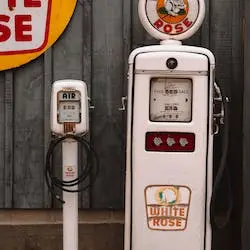
Level 1:
Airplanes today need cleaner fuel to fly. This clean fuel is called Sustainable Aviation Fuel (SAF). SAF is better for the planet. It makes less pollution than normal fuel. It also helps fight climate change. More airplanes are using SAF now. This is good for our future.
Level 2:
Airplanes have a big problem — they use a lot of fossil fuel, which is bad for the planet. One solution is Sustainable Aviation Fuel (SAF). SAF is eco-friendly and produced from renewable resources, cutting down the greenhouse gases that planes emit. It’s a big step towards making flying less harmful to the environment. Using SAF means less pollution, helping to tackle climate change. As more airlines switch to SAF, we’re moving towards a greener future for aviation.
Full Story:
Every time we board a flight, we’re putting a significant strain on our planet — but it doesn’t have to be that way. The solution to this conundrum? Sustainable Aviation Fuel (SAF).
Planes traditionally run on kerosene-based jet fuel, a product of crude oil, contributing to the ever-worsening problem of greenhouse gas emissions. It’s clear as day that we need to slash these emissions, and SAF is the ticket to making it happen.
SAF is produced from renewable resources like used cooking oil, agricultural residues, non-fossil CO2, and waste gases, as opposed to the conventional jet fuels derived from fossil sources. This drastically cuts down on carbon emissions, offering a silver lining to the dark cloud that has been hanging over the aviation industry.
The best part? SAF isn’t a pipe dream — it’s a reality. A number of airlines are leading the charge in adopting SAFs in their fleets. This bold step forward shows their commitment to tackling climate change. More than just being a feather in their cap, it demonstrates a recognition of the high stakes involved in continuing to use fossil fuels.
It’s clear that SAF is no flash in the pan. As we look to the future, the ground is shifting under the feet of the aviation industry. With mounting pressure to reduce carbon emissions, the adoption of SAF is looking more like a necessity than a choice.
There’s no beating around the bush: transitioning to SAF won’t be easy. It will require extensive investment and innovation. But the fight against climate change will not be won with half measures. We need to take the bull by the horns and pursue all avenues to make air travel more sustainable.
Switching to SAF won’t just herald a new era for aviation — it will also contribute to a global effort to stem the tide of climate change. By rising to the occasion, the industry can show the world that it’s committed to safeguarding our planet for future generations.
Questions:
Question: What is Sustainable Aviation Fuel? Answer: Sustainable Aviation Fuel (SAF) is a type of eco-friendly aviation fuel produced from renewable resources. It’s designed to reduce the greenhouse gas emissions from air travel.
Question: How does SAF contribute towards reducing carbon emissions? Answer: SAF is produced from renewable resources like used cooking oil, agricultural residues, non-fossil CO2, and waste gases, unlike traditional jet fuels derived from fossil sources, so it drastically cuts down on carbon emissions.
Question: Why is it necessary for the aviation industry to transition to SAF? Answer: It’s necessary for the aviation industry to transition to SAF to reduce its contribution to greenhouse gas emissions, mitigate climate change, and move towards more sustainable operations.
Question: What challenges does the industry face in transitioning to SAF? Answer: The transition to SAF requires extensive investment and innovation, as it involves developing new technology and infrastructure. The process of sourcing and producing enough sustainable fuel also poses challenges.
Fill in the Blanks:
slash these emissions, silver lining, leading the charge, bold step forward, feather in their cap, high stakes, no flash in the pan, ground is shifting, no beating around the bush, stem the tide, rising to the occasion
It’s clear as day that we need to ________, and SAF is the ticket to making it happen.
This drastically cuts down on carbon emissions, offering a _______ to the dark cloud that has been hanging over the aviation industry.
A number of airlines are __________ in adopting SAFs in their fleets.
More than just being a ___________, it demonstrates a recognition of the _________ involved in continuing to use fossil fuels.
It’s clear that SAF is ___________.
As we look to the future, the ___________ under the feet of the aviation industry.
There’s ________: transitioning to SAF won’t be easy.
By ___________, the industry can show the world that it’s committed to safeguarding our planet for future generations.
Difficult Words:
Slash these emissions - (phrase) dramatically reduce or decrease emissions.
Silver lining - (phrase) a positive aspect in an otherwise difficult or negative situation.
Leading the charge - (phrase) being the first to take action in a new, innovative, or bold initiative.
Bold step forward - (phrase) a significant move or decision in advancing towards a goal.
Feather in their cap - (phrase) a significant achievement or honor.
High stakes - (phrase) a situation where much can be gained or lost.
No flash in the pan - (phrase) attributing lasting significance or value to something, i.e., it’s not merely a passing trend.
Ground is shifting - (phrase) the situation or consensus is changing.
No beating around the bush - (phrase) no avoiding the main point; speaking frankly and directly.
Stem the tide - (phrase) stop the increase or growth of a negative occurrence.
Rising to the occasion - (phrase) to perform well in response to a challenge or situation.




